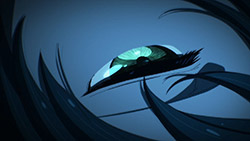 |
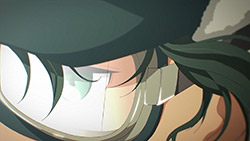 |
 |
 |
 |
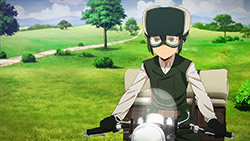 |
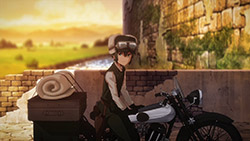 |
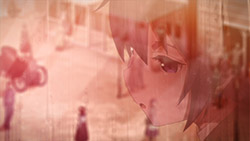 |
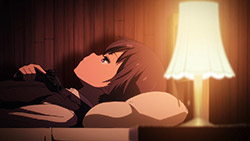 |
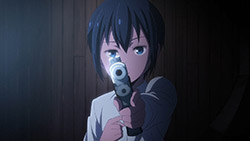 |
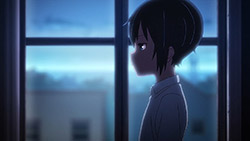 |
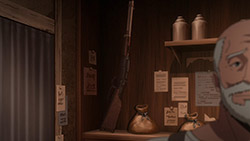 |
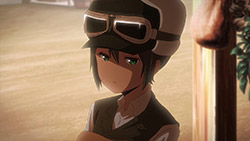 |
 |
 |
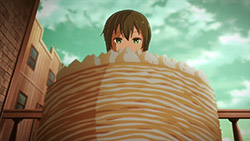 |
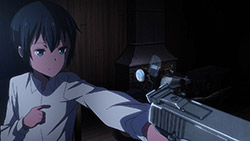 |
 |
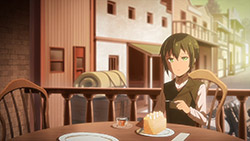 |
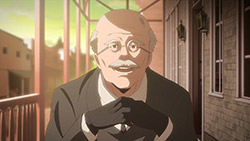 |
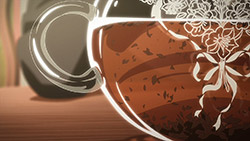 |
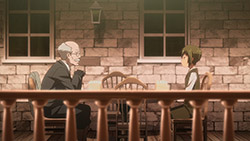 |
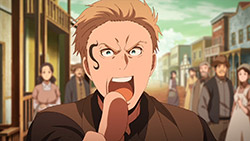 |
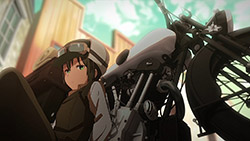 |
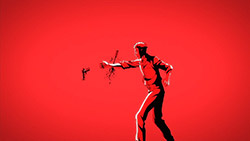 |
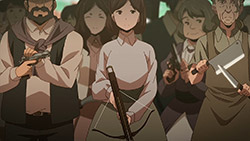 |
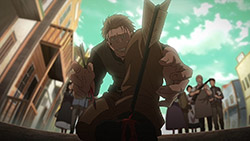 |
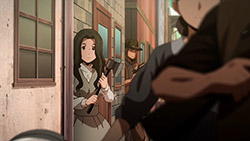 |
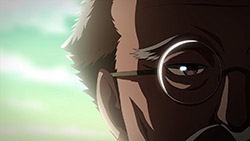 |
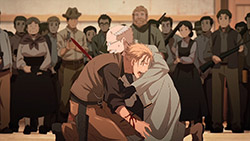 |
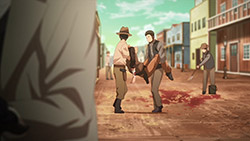 |
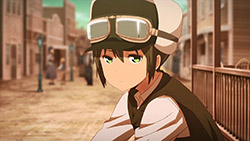 |
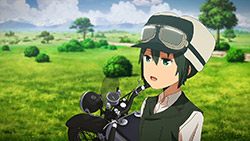 |
 |
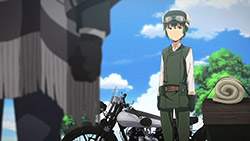 |
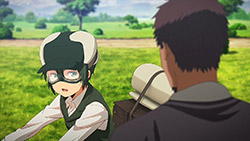 |
「人を殺すことができる国」 (Hito o Korosu Koto ga Dekiru Kuni)
“A Country Where People Can Kill Others”
I have to come clean about something; I’ve only seen two episodes of the 2003 anime back when I got the boxset a few years back. It was one of those shows I kept meaning to return to, but was always sidetracked by one thing or another. From the two episodes I’ve seen, I admired the central plot of Kino no Tabi as our titular character went on a journey across the world with talking motorcycle Hermes as they examine the town’s way of living. Because much of the world has a fantastical, magical tinge to it, the vast differences in each country’s culture offer up philosophical lessons for Kino to mull over while taking three day visits to each country.
As details came out about this soft remake of Kino no Tabi, many fans of the series were skeptical about whether it could match how great the first series turned out. The new voice actress for Kino (Yuuki Aoi), Kino’s cuter eyes, the director’s history with Persona 4 The Golden ANIMATION, and some of the CG on Hermes (Saito Soma) planted the seed of doubt in some commentators. However, most, if not all, can rest easier about the concerns of another Berserk-style remake because the first episode of Kino no Tabi -the Beautiful World- is nothing short of fantastic!
Aside from the occasional CG from Hermes, a majority of the anime has stunning background designs, and art that fits well with the universe that Kino no Tabi portrays. At the beginning, it was jarring to see Kino with such cute eyes compared to the older artwork, but it was barely noticeable as the episode went on, and it works with Kino’s newer design on the LN covers. I absolutely loved Yuuki Aoi’s voice as Kino considering that she gives Kino a lot of justice by matching well with the character’s low pitch tone that made Maeda Ai and Kelli Cousins‘ performances so memorable. Yuuki captures the curiosity, worry, and fascination that Kino has about the places Kino discovers. Although there’s a new coat of paint that’s a little brighter and fancier, it still remains the same Kino no Tabi in spirit and execution.
Considering that this new series adapts the more beloved segments from the light novel, we begin on a different note from the original with an adaptation of “A Country Where People Can Kill Others”. Despite not exactly starting up on the beginning, it proves to be a great starting point for the remake as it gives us a glimpse into Kino’s motivations, personality, and behavior without feeling like it has to provide a large infodump. What we find out about Kino and Hermes within the story comes along naturally as they navigate through a country where murder is not prohibited. As someone whose knowledge on the series isn’t as great as it should be, following along was simple and compatible, yet didn’t hand-hold too much to the point of being distracting.
The chapter they started with approached the complicated nature of law and order in a society where murder is the backbone of how a country operates and governs. The townspeople are all armed to the teeth in case they need the guns and knifes they need if they have to kill that day. Because of this, and the perception from some outsiders like this violent blonde man that it’s a playground for murderers, we are left on the edge of our seats along with Kino about when it’ll hit the fan. The episode effectively plays around with the uneasiness the town gives off as it’s all too calm and peaceful for a town where it isn’t illegal to kill. With every hint Kino picks up on like the shotgun in the back of a counter or an old lady with a pistol in her purse, it gives off this eerie feeling where we’re not exactly sure when someone will be murdered, or when someone has to kill. Exchanges Kino has with other townsfolk are tense the more they inquire that maybe Kino would enjoy being in a town where you could kill people. It has this paranoid thriller feel to it where Kino stays on-guard and prepared for the off-chance Kino encounters a killer, or for the occasion when the townspeople go all guns ablazing.
It’s not until the blonde man resurfaces, who wants to make Kino his first kill in town when all of the sudden, Kino finds out why exactly the town allows murder. The town has been able to preserve the peace it has by weeding out those who cause a disturbance with the blonde man being made an example of by having the whole town ascend on him as they shoot him with arrows and stab him. On one end, it’s the freakiest image to see everyone from tough bruisers to old ladies carrying weapons with a blank face as they prepare to kill whoever causes a ruckus in town. On the flip side, the episode proposes the idea that the town is still a peaceful one, and it has been possible to make the town one of the safest places to live in by having a town-mandated execution for anyone who comes expecting to abuse their murder law to kill whomever they want. This is solidified further when Kino meets a grizzled-looking man near the same lake the blonde man was lounging at, but instead of asking if Kino’s heading to the super cool murder town, he is asking if the town is as peaceful as he hears because he wanted to escape from the violent town he came from for safety and crepes.
After Kino learns that the town maintains the peace because they only kill when it’s necessary for their serenity, it comes off like a poetic way of how different people perceive the town. Someone obsessed with violence would be excited about the prospect of being able to whip out a gun or knife wherever they want, and get away with murder, but a pacifist would see a town like this as a safe haven from places where violence can be encountered regularly. It offers a complicated, but unique take on how people are able to co-exist in a violent society, or exactly how free or safe a town is where everyone unanimously decides who should be killed.
The new Kino no Tabi is beginning on the right note by maintaining what made Kino’s journey from country to country so thought-provoking and intriguing. I’m excited for what will come next as someone who is relatively new to the series, and it reinvigorated what I drew me to the older episodes. Hopefully they’ll be able to keep the momentum they’ve built up so far going, but from the looks of the first episode, I have faith that they understand what made the stories click, and will continue to explore the deeper nuances of Kino and Hermes’ adventure.
ED Sequence
 |
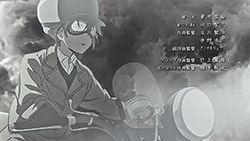 |
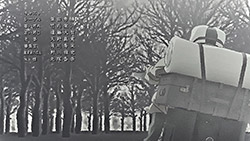 |
 |
 |
 |
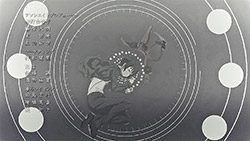 |
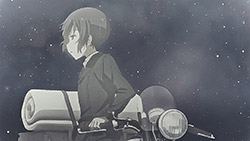 |
 |
ED: 「砂糖玉の月」 (Satoutama no Tsuki) by Yanagi Nagi
Preview
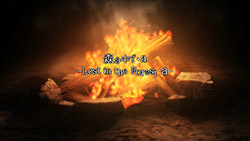 |
 |
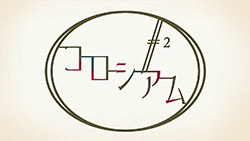 |

Thats not an Shotgun in the back of the Store, its an Winchester Rifle.
http://www.kauboi.de/out/pictures/master/product/1/winchester4stck.jpg
Winchester
https://www.cimarron-firearms.com/media/catalog/category/Shotgun_page_2.jpg
Shotgun
The different are the Trigger. The Winchester have some manual reload and an magazine, where the Shotgun have only 2 Triggers for each shoot
Damn!
Ah, the barrels threw me off, but rifles do have theirs stacked vertically instead of horizontal. Of course, I’m describing the differences poorly because I’m not well versed in gun models, and base my experience with guns on film, vidjas, and browsing through online webpages for sporting goods out of curiosity.
No Problem, these old Western Guns touched me while watching old John Wayne films..
Someone that tiny couldn’t possibly kick-start a bike with an engine that big in the real world.
and the Fuel problem, where is the next Gas Station? 🙂 Well, with these modern Handguns i think there are also Gas Stations, just outside of the Anime screentime
Who told you that magicaly talking motorcycle even needs gas?
Well, we ourselves need to eat and drink, and even to sleep
But this Motorbike just run with Love and Air? 🙂 I know its Anime Magic. But its cool, it do not need any gas and not even lubrication.. of course it do not need sleep, just the driver need it
But this Motorbike seems like an “tool” to move to other country’s. So it is okay
But these modern art Pistols and this Motorbike, feel like out of Place in this “Cowboy” City.. if he would not be around, you could think it would play in the “Wild wide West!”.. i know they mean Texas. Seems like they do not need an Sheriff
I went into this with zero prior knowledge of Kino no Tabi as well as zero expectations, and I’m in love.
I feel kinda silly not realizing Kino’s a girl until I read this RC post…
Don’t feel bad. It took me four episodes of the original series to find that out. That was when her origin story was told where she was clearly a girl and it was really dark.
That’s Kino no Tabi in a nutshell though. Absolutely beautiful to look at but it masks just how f***** up the world Kino travels in.
No, the world of Kino no Tabi is f***k up in the “really weird” sense, not “grimdark” sense. Some places are pretty dark though.
When I watched the original (some time ago), I was surprised
to learn that many (on the ‘net) were unsure of Kino’s gender —
but I knew her gender from the get-go. For whatever, in the
original, I didn’t see anything she did as guy-like. It wasn’t until
the flashback episode that Kino’s female gender was established.
I was actually worried that this remake would make Kino more
masculine, and I don’t see anything like that (so far after just a
single episode) which makes me happy.
And, I’m happy (that it seems) that these are new stories, not
a remake of the existing original series stories. So, I really
looking forward to how this re-boot plays out.
Well, I think the anime was trying to highlight something about Kino’s character.
Show Spoiler ▼
I’m glad the show’s working well with newcomers.
Show Spoiler ▼
Superb first episode! I liked it the most of all shows I have seen so far this season.
Very good write-up, Choya! Thank you for the background information.
Thank you!!! Glad to hear I could help or create a good write-up.
https://randomc.net/image/Kino%20no%20Tabi/Kino%20no%20Tabi%20-the%20Beautiful%20World-%20the%20Animated%20Series%20-%2001%20-%20Large%2004.jpg
https://randomc.net/image/Kino%20no%20Tabi/Kino%20no%20Tabi%20-the%20Beautiful%20World-%20the%20Animated%20Series%20-%2001%20-%20Large%2035.jpg
search the difference 🙂
I felt that was actually the point of reusing the frames. Even the intro and extro where the men were laying in the grass with their horses was the same, as well as the conversation with Hermes about stopping.
It was to contrast how 2 people in the very similar situations can have completely different views on society and the world at large.
Using the same animation can come off as lazy at points, but I feel that reusing some of the frames during Kino’s conversations was effective in contrasting the two men by the river. They both are heading to town out of frustration, but one looks for murder and the other looks for refuge.
The only thing that messes me up is that she steers Hermes in the same direction from both instances. She heading into town when she meets the first man, and leaving town when she meets the second, but she makes the same right-hand turn by the river. Unless the roads exiting and entering the town resemble each other, it doesn’t make sense that she warped to the same point she did when she was traveling to the town when she left. That drove me nuts because it implied that even though she just left the town, she backtracked just so that she could pass the river again. Like she passed the river on the way to town, left the way she came from, and then did a U-turn back to town to pass the river. That was one instance I thought they could at least invert the road or change its shape so that it looks like she didn’t U-turn back around.
I kept meaning to return to, but was always sidetracked by one thing or another.
same for me!
now I have a reason to go back and watch it. 🙂
While not a good as the original, in terms of art, atmosphere, and some characterizations (the antagonist was a bit much), this was still very enjoyable. Thus gives me a reason to re-watch the series again.
It does make me want to finish up the original Kino’s Journey from where I started because of the plot as well as the faded out artstyle that gave off a cool, foreboding feeling to her trip.
Great ep; very pleased! Its subtitle could be “It’s Heinlein’s world; we’re just living in it”
I’m glad you enjoyed your stay in Texas, Kino!
But seriously, it’s nice to see this series return. It retains the deceptively relaxing tone of the first series.
Kino no Tabi has always been one of my top twenty anime series.
I watched it when I was in my tweens but even then the philosophy of each episode didn’t escape me. My favorite was the Tower Country special. As well as the episodes that explained how Sakura became Kino and how she commenced her travels. And also the episode where everyone can read everyone else’s minds.
The only problem I had with the original was the character designs. Kino looked like a fucking potato that has been smashed with a frying pan.
I never watched the original series initially. The original Kino’s Journey was before my time. That said, when I heard about the remake, I started reading the light novels that were translated, and I got hooked.
I can’t really comment on comparisons from the original having never seen the original. I watched perhaps one or two episodes on Youtube, but they were a little faster and dubbed, so it was a bit hard to understand. Back then, the anime art style was different, but with this new series, it’s not too bad. It’s cleaner in some ways, and I really didn’t notice that Hermes was CGI. Personally, it doesn’t make much difference to me. I really like Kino’s face here. The visuals are really pretty to look at. Also, I’m glad that Aoi Maeda’s the voice of Kino. If you know her background, then it’s only fitting that she should be the one to voice Kino.
Show Spoiler ▼
As the series goes on, I hope that it really showcases the novels in a way that only anime can. I read up to around the 12/13th volume translated by Baka Tsuki, but I still find myself struggling to answer one question: Is Kino a good person? I hope that the anime will help in this regard. Speaking of which, I know that they might only focus on thought-provoking episodes, but I do hope that we get some nice short stories that highlight the cute side of Kino’s character, like the Land of Pets or the Land of Traditions. Small stories like that may seem insignificant and filler, but they seem like a nice distraction. I was a little disappointed in this episode in that it didn’t show Kino’s cute side with the crepes. That would be nice to see.
Sorry, correction, Aoi Yuuki, not Aoi Maeda. Got the names mixed up.
Kino’s gender is not really a secret, even to the audience. Even her origin story episode doesn’t hide that, as it show she was very much 100% a girl there. In fact her gender is not really brought up by anyone, not does anyone make a big deal out of it. Its much like how no one reacts to the fact that Hermes talks, its not treated as important or relevant in the grand scheme of things.
As for Kino’s morality she is simply a neutral person. Kino is simply a traveler and observer to a country’s laws and customs. Her character practically exudes this, calm, stoic and androgynous. She’s basically neutrality personified. Kino never judges anyone for who they are or what they do. Unless of course someone directly threatens her life at which point they learn the hard way, that Kino is a badass who can end you within seconds.
Well, based on what I read, like you said, Kino is neutral. As a traveler, she can’t really influence the places visit, nor does she wishes to. To her credit, she’s friendly to everyone in the beginning. It’s just that there are some stories that have Kino in some questionable situations, but mainly it’s due to other people requesting her services. Its these situations that cause me to question whether she’s a good person. She doesn’t actively kill people, so in that sense, she’s good. I guess I want to see her as a person who does questionable things when requested of her (her own survival is a little different), but in the end, she typically does what’s best so she doesn’t exactly compromise her morals.
On that note, I see Master to be similar to Izumi Curtis and Nami!
Kino is the neutral bystander observer, while
Show Spoiler ▼
Whomever said this was a relaxing series… clearly lied 😛
In all seriousness though, there is something to be said when an anime ups the tension in the viewer beginning from the episode title. I can only hope the thought provoking aspect of Kino’s Journey’s story is gonna be as wild as we’ve seen this episode. But since the episode handled such aspect by dropping little hints as to the true nature of the town like some bread crumbs, I think I will be further surprised.
Speaking of which, a country where people you can kill others without being criminalized. But where “not prohibited” does not equal “permitted”. I have to say, even though it is certainly questionable, this little town managed to achieve its own “perfect” peace. While I do keep in mind that perfection can vary in this world according to each town’s mind set, no matter how wrong it may seem, in its own way, this system works. The old man wished Kino would stay as he perceived her as someone “who can kill”. Not a killer, but someone who can kill. This town doesn’t raise killers. It raises normal peaceful people who are capable of killing, but don’t do it out of malice and joy. That’s why you don’t see kids wielding weapons in their hands, lest they pick up a messed up mind set of a killer. I think it’s especially this tiny little hint of kids not having weapons that made Kino realize just what is means that this town doesn’t prohibit killing, among others. The flip side to this system, though, in my opinion, is that it doesn’t work on larger cities or entire nations. Because sooner or later, people are gonna rise up with the mind set that killing is wrong no matter who is on the receiving end. A town is more manageable than entire nations or cities. It just goes to show you, smaller units tend to have a stronger conviction than larger ones. Is killing wrong? Normally it is. But in this world, right and wrong aren’t gonna be as clear cut as we might’ve preferred. I am certainly gonna stick around.
not many kids in that country period. Since it’s mainly composed of people looking to escape a life of violence, the population was fairly old. How they deal with the next generation and whether they can truly maintain the country’s “philosophy” is one of the things that weren’t covered. Just one more hint that it’s not “perfect”, just like all the other countries.
This show is making my 11-year-old so happy… Yes, I was eleven when I first get to know the series. I am now 24.
11-year-old…self. I don’t have a child yet hahaha.
Ep 02:
I do not want to tell about the episode, i just want to give my “feeling” about this
it is like Mushishi on its own way. Where Mushishi is focused on Nature and Spirits around it, Kino no Tabi has its own cosmos
But, this Show is more for Adults that knows what the Episode (like this one) mean it.
It has some kind of message where adults get the gist. Kids or “Nature lovers” will not understand it
Well, to understand his driver here, you should be a bit mature. So this Anime is not really for Kids, more for “Truth of life”.. You should watch with someone that can explain it
to spill a bit the beans…
until now we have 2 Episodes that resolve around death…